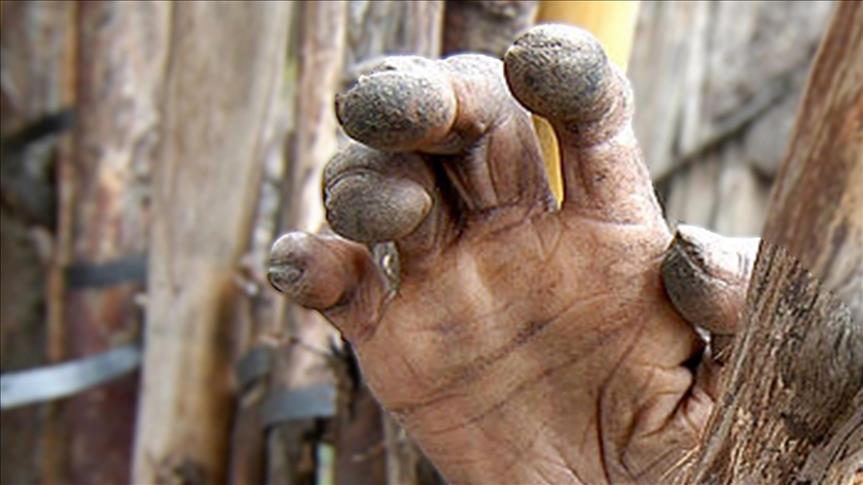Poverty, disability and stigma depress Ethiopian lepers
Many developed nations have eliminated leprosy disease but it is still enemy of poor in Ethiopia, official says

By Seleshi Tessema
ADDIS ABABA, Ethiopia
A 70-year-old man was playing cards with his friends in a quiet room shared by a dozen
Showing his amputated legs, Daba said: “I lost years of battle with leprosy, but life goes on.”
Daba is one of
Enemy of the poor
Leprosy is a preventable infectious disease. Taye Leta, head of Leprosy and Tuberculosis Prevention Department of Ethiopian Ministry of Health, told Anadolu Agency that people who have failed to have a treatment at the early stage of the disease suffered permanent damage to their skin and eyes.
“Those who came late for treatment have got their bones deformed and destroyed resulting in amputation with prolonged hospitalization,” he said, adding that Ethiopia has been trying to assist people with life-long effects of leprosy since 1956.
“Due to concerted efforts over the last 6 decades, new leprosy cases have now dropped from 80,000 in 1985 to 3,000 in 2016,” Leta added.
“We provide treatment and rehabilitation free of charge in 5 referral hospitals and more than 2,000 health centers throughout Ethiopia,” he said.
However, he said people in some 211 highland localities in different parts of Ethiopia were still vulnerable to leprosy, and Ethiopia still needs to improve the quality of service delivery and early diagnosis capabilities of health institutions to eliminate the disease.
“Many developed nations have eliminated the disease, but we are still living with
According to the World Bank, Ethiopia which is the second most populous nation in Africa after Nigeria with 102 million population “is one of the fastest growing
However, the bank states that 24 percent of the population lives below the “national poverty line in 2016”.
Oldest sanctuary
On a bright morning, new and outpatient people of all ages swamped ALERT hospital. Some were in wheelchairs, others use wooden walking sticks and many were with bandaged hands and legs. They were visibly nervous and shy.
Meles Yirga, a counselor at the hospital, told Anadolu Agency that leprosy significantly erodes self-esteem of patients which often trigger anxiety and depression.
“They [patients] know that they will be despised and alienated by the society and their own families,” he said, adding that those who were permanently disabled by the disease often find it difficult to reintegrate with their communities and their families.
“Due to the stigma, new patients are reluctant to seek medical treatment at
In addition to medical treatment, the hospital has been providing financial assistance, skills and protective footwear to rehabilitate people affected by leprosy, he noted.
Beka
But, there are a good few people with leprosy who would not go back to their families. They were abandoned by their families.
“I came to ALERT 40 years ago,” said 72-year-old Amenush Ayele in a subdued tone. “My husband and relatives were ashamed of my health condition, and had refused to visit me.”
“They left me here, I leave this betrayal to the Day of Judgment,” she said angrily.
Anadolu Agency website contains only a portion of the news stories offered to subscribers in the AA News Broadcasting System (HAS), and in summarized form. Please contact us for subscription options.


